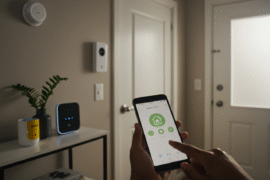This article may contain references to products or services from one or more of our advertisers or partners. We may receive compensation when you click on links to those products or services. Nonetheless, our opinions are our own.
The information presented in this article is accurate to the best of our knowledge at the time of publication. However, information is subject to change, and no guarantees are made about the continued accuracy or completeness of this content after its publication date.
Medicare is a federal program in the United States that provides health insurance to people aged 65 or older, as well as younger individuals with certain disabilities or chronic conditions. This program has helped millions of people in the US access comprehensive coverage for their medical expenses.
But while Medicare coverage is extensive, it can still be confusing. One significant element that needs to be clear about Medicare coverage is the maximum out-of-pocket expenses beneficiaries have to face.
In this blog post, we’ll cover everything you need to know to set your expectations correctly when filing a medical insurance claim with Medicare.
- Understanding Medicare Coverage and Out-of-Pocket Expenses
- How to Calculate Your Maximum Out-of-Pocket Costs
- The Differences Between Medicare Parts A, B, C, and D: Out-of-Pocket Costs
- Strategies for Lowering Your Medicare Out-of-Pocket Expenses
- Choosing the Right Healthcare Coverage for You
- Recommended Reads
Understanding Medicare Coverage and Out-of-Pocket Expenses
Alongside life insurance, medical insurance is an essential policy that most people should invest in. But understanding the costs involved and finding the right policy for your needs can be an overwhelming experience.
When it comes to understanding Medicare coverage, it’s important to know that while this program will cover many healthcare costs, there are still out-of-pocket expenses you may be responsible for.
These can include deductibles, copayments, and coinsurance. It’s crucial to review your plan’s details carefully and understand what services are covered and what portion of the cost you will need to pay. You should also consider additional coverage options such as Medigap or Medicare Advantage plans to help with these expenses.
How to Calculate Your Maximum Out-of-Pocket Costs
With the average annual premium for private health insurance policy being as high as $7,911 for single coverage, it is clear that Medicare is a convenient and affordable option. Nonetheless, being aware of potential out-of-pocket costs is crucial to avoid unexpected bills down the line.
To calculate your maximum out-of-pocket costs, start by reviewing your plan’s summary of benefits and coverage. Look for the maximum out-of-pocket limit listed for both in-network and out-of-network care. Add up your deductible, copays, and coinsurance to estimate how much you’re likely to pay in healthcare costs throughout the year.
Once you hit your out-of-pocket limit, your plan will cover any additional costs for covered services for the rest of the year. While it can be challenging to predict exact costs, understanding what you might owe can help you budget appropriately.
Voted "Best Overall Budgeting App" by Forbes and WSJ
Monarch Money helps you budget, track spending, set goals, and plan your financial future—all in one app.
Get 50% OFF your first year with code MONARCHVIP
The Differences Between Medicare Parts A, B, C, and D: Out-of-Pocket Costs
The costs involved with Medicare are determined by the plan you have chosen. Below, we’ll look at an overview of the out-of-pocket expenses for Medicare Parts A, B, C, and D:
- Part A: This is a hospital insurance policy and covers inpatient hospital stays, skilled nursing facilities, and hospice care. If you are eligible for Part A, you won’t pay a monthly premium, but you’ll have a deductible amount of $1,600 for each time you’re admitted to the hospital
- Part B: This medical insurance policy covers outpatient medical services like doctor visits, preventive care, and medical equipment. Typically, you’ll pay a monthly premium of $164.90 and a deductible of $226 before Medicare starts to pay. You’ll also be responsible for paying 20% of the cost of each service covered by Medicare (coinsurance).
- Part C (Medicare Advantage) and Part D: These plans have lower out-of-pocket expenses compared to private insurance policies, but the costs involved vary depending on the extent of your coverage and your unique needs.
Strategies for Lowering Your Medicare Out-of-Pocket Expenses
There are several strategies you can use to lower your Medicare out-of-pocket expenses, including:
- Choosing a Medigap policy that covers some or all of the gaps in Medicare coverage
- Enrolling in a Medicare Advantage plan instead of the Original Medicare
- Using generic drugs instead of brand-name drugs when possible
- Taking advantage of free preventive services covered by Medicare
- Avoiding penalties and fees by enrolling during the official enrollment period
- Shopping around for healthcare providers and services that offer lower costs while maintaining quality care
You should also lead a healthy and active lifestyle that allows you to prevent medical emergencies and healthcare costs. Lastly, keep yourself informed by getting the Medicare max out-of-pocket explained to you by an expert – this allows you to stay on top of changes within the program and adjust your policy as needed.
Choosing the Right Healthcare Coverage for You
Although Medicare isn’t free, it can lead to significant cost savings. Nonetheless, it is important for you to understand the ins and outs of your policy to plan your budget and ensure you are getting the right coverage for your needs.

Reviewed and edited by Albert Fang.
See a typo or want to suggest an edit/revision to the content? Use the contact us form to provide feedback.
At FangWallet, we value editorial integrity and open collaboration in curating quality content for readers to enjoy. Much appreciated for the assist.
Did you like our article and find it insightful? We encourage sharing the article link with family and friends to benefit as well - better yet, sharing on social media. Thank you for the support! 🍉
Article Title: Healthcare Coverage Explained – Max Medicare Out-of-Pocket Expenses For 2023
https://fangwallet.com/2023/05/16/healthcare-coverage-explained-max-medicare-out-of-pocket-expenses-for-2023/The FangWallet Promise
FangWallet is an editorially independent resource - founded on breaking down challenging financial concepts for anyone to understand since 2014. While we adhere to editorial integrity, note that this post may contain references to products from our partners.
The FangWallet promise is always to have your best interest in mind and be transparent and honest about the financial picture.
Become an Insider

Subscribe to get a free daily budget planner printable to help get your money on track!
Make passive money the right way. No spam.
Editorial Disclaimer: The editorial content on this page is not provided by any of the companies mentioned. The opinions expressed here are the author's alone.
The content of this website is for informational purposes only and does not represent investment advice, or an offer or solicitation to buy or sell any security, investment, or product. Investors are encouraged to do their own due diligence, and, if necessary, consult professional advising before making any investment decisions. Investing involves a high degree of risk, and financial losses may occur including the potential loss of principal.
Source Citation References:
+ Inspo












































